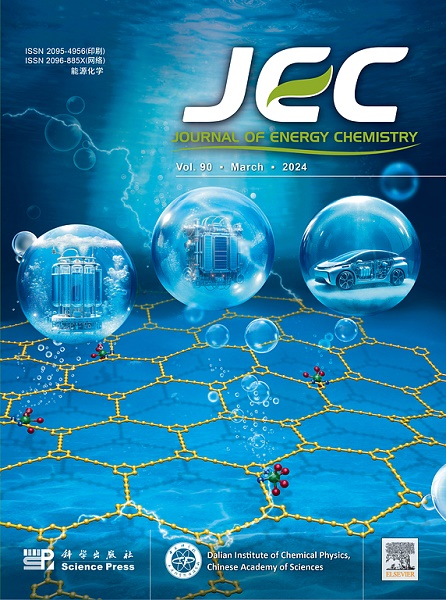Insights into the doping rules of heteroatom on Ni-rich ternary cathode stability by integrating high throughput calculation and machine learning
IF 13.1
1区 化学
Q1 Energy
引用次数: 0
Abstract
Oxygen release from Ni-rich cathode is one of the major structural degradations resulting in rapid performance fading in lithium-ion batteries (LIBs). The energy gap between the transition metals (TM)-d band and the O-p band serves as an effective evaluation metric in characterizing the potential for oxygen release. Given that the primary oxidation factors of NCM811 materials vary at different states of charge (SOC), this study employs high-throughput density functional theory (DFT) calculations combined with machine learning (ML) to systematically investigate the regulation mechanism of heteroatoms on the energy gap between the TM-d band (TM = Ni, Co) and O-p band at various SOC levels. High-throughput DFT calculations were used to study doping thermodynamic stability and complete the database. The results indicate that dopant atoms remain at their original sites even at 50% SOC. Correlation analysis reveals that at 0 SOC, the dopant reduces Ni–O bonding interactions by forming its own bonds with oxygen, thereby preventing lattice oxygen escape and weakening the oxygen binding of the system during Ni redox. At 50% SOC, the dopant and Co atoms synergistically strengthen their bonding interactions with oxygen, thereby maintaining structural stability and inhibiting lattice oxygen escape. Based on R2 and root-mean-square error (RMSE), the gradient boosting regression (GBR) algorithm is identified as optimal for predicting the energy gaps between the Ni-d band and O-p band, as well as between the Co-d band and O-p band. Feature importance analysis demonstrates that the magnetic moment (Dma) of the doped atom significantly contributes to the prediction of ΔNi–O and ΔCo–O. In this study, the energy gap regulation mechanisms of Ni-d/O-p and Co-d/O-p are systematically investigated using non-empirical first principle calculations combined with data-driven machine learning, aiming to provide insights into the electrochemical stability of NCM811 and related materials.

求助全文
约1分钟内获得全文
求助全文
来源期刊

Journal of Energy Chemistry
CHEMISTRY, APPLIED-CHEMISTRY, PHYSICAL
CiteScore
19.10
自引率
8.40%
发文量
3631
审稿时长
15 days
期刊介绍:
The Journal of Energy Chemistry, the official publication of Science Press and the Dalian Institute of Chemical Physics, Chinese Academy of Sciences, serves as a platform for reporting creative research and innovative applications in energy chemistry. It mainly reports on creative researches and innovative applications of chemical conversions of fossil energy, carbon dioxide, electrochemical energy and hydrogen energy, as well as the conversions of biomass and solar energy related with chemical issues to promote academic exchanges in the field of energy chemistry and to accelerate the exploration, research and development of energy science and technologies.
This journal focuses on original research papers covering various topics within energy chemistry worldwide, including:
Optimized utilization of fossil energy
Hydrogen energy
Conversion and storage of electrochemical energy
Capture, storage, and chemical conversion of carbon dioxide
Materials and nanotechnologies for energy conversion and storage
Chemistry in biomass conversion
Chemistry in the utilization of solar energy
 求助内容:
求助内容: 应助结果提醒方式:
应助结果提醒方式:


